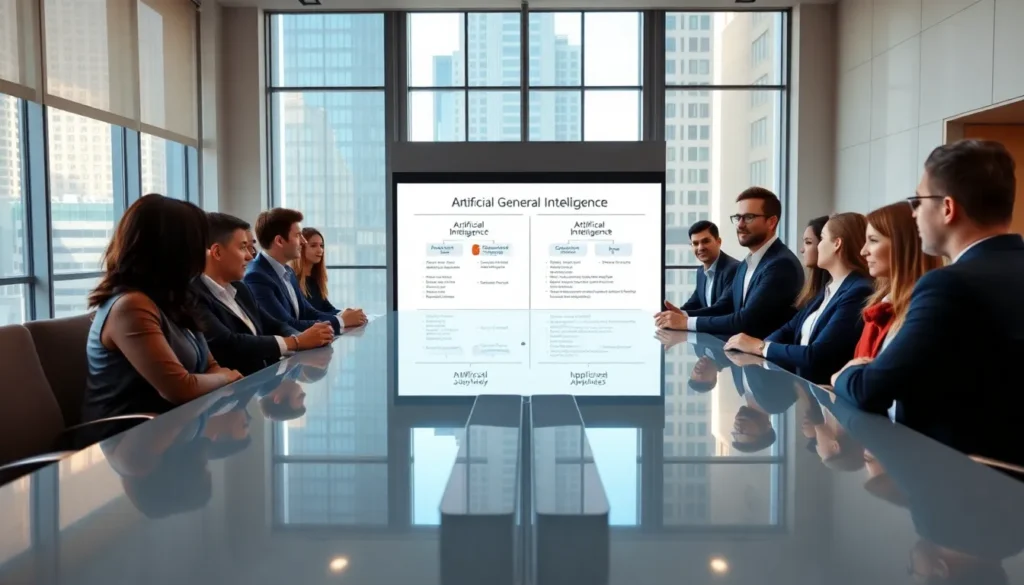Table of Contents
ToggleIn today’s fast-paced educational landscape, a Course Management System (CMS) has become essential for institutions striving to enhance learning experiences. By streamlining course administration and fostering seamless communication between instructors and students, these platforms are revolutionizing the way education is delivered.
From organizing course materials to tracking student progress, a CMS offers tools that empower educators and learners alike. As technology continues to evolve, understanding the benefits and features of a robust course management system is crucial for anyone involved in education. With the right CMS, schools and universities can create dynamic learning environments that adapt to the needs of their students.
Overview of Course Management Systems
Course Management Systems (CMS) streamline the management of educational activities. They facilitate course delivery, resource sharing, and communication between instructors and students. A CMS typically includes features such as:
- Content Management
Content management enables instructors to upload and organize course materials, including readings, lecture notes, and multimedia files.
- Assessment Tools
Assessment tools allow for the creation and administration of exams, quizzes, and assignments, providing immediate feedback to students.
- Communication Features
Communication features support announcements, discussion forums, and direct messaging, enhancing interaction within the learning environment.
- Progress Tracking
Progress tracking offers analytics on student engagement and performance, allowing instructors to identify areas for improvement.
- Integration Options
Integration options connect to other educational technologies, such as grading systems and learning analytics, expanding the functionality of the CMS.
- Accessibility Features
Accessibility features ensure content is available to all students, accommodating diverse learning needs.
- Customization Capabilities
Customization capabilities enable educators to tailor the CMS to fit their specific teaching styles and course requirements.
Effective utilization of a CMS promotes a more organized and supportive learning atmosphere. As educational institutions adopt these systems, they can enhance student outcomes and foster an interactive community.
Key Features of Course Management Systems

Course Management Systems (CMS) offer a variety of features that streamline educational processes and enhance the learning experience. Key functionalities include course creation and management, user administration, and communication tools.
Course Creation and Management
Course creation and management tools facilitate the development and organization of course materials. Educators can easily upload documents, videos, and multimedia resources. Structured templates assist in designing curricula that meet specific educational goals. Course calendars allow tracking of lessons, deadlines, and events. Automated grading systems simplify assessment processes, enhancing efficiency for instructors. Content versioning options ensure updated materials reflect the latest information, promoting relevance and accuracy.
User Administration
User administration features provide control over access and roles within the CMS. Administrators can create and manage user accounts for students, instructors, and staff, assigning appropriate permissions to streamline navigation. Analytics tools track user engagement, enabling identification of trends and areas needing improvement. Role-based access ensures that users see only relevant information, enhancing security and usability. Batch enrollment options allow for efficient onboarding of multiple students at once.
Communication Tools
Communication tools enhance interaction between instructors and students. Built-in messaging systems facilitate direct communication, promoting quick feedback and support. Discussion forums create spaces for collaborative learning and idea exchange among peers. Announcement features help share essential updates with the entire class. Event scheduling tools integrate with calendars, ensuring that students stay informed about important dates. Notifications alert users to key activities, deadlines, and feedback, fostering a connected learning environment.
Benefits of Using a Course Management System
A Course Management System (CMS) enhances teaching and learning through various benefits. It streamlines processes and creates a more engaging educational experience.
Enhanced Learning Experience
A CMS fosters personalized learning paths for students. It provides access to resources anytime, anywhere. Students engage with interactive content and receive immediate feedback on assessments. Instructors can tailor materials to meet diverse learning needs, ensuring that all students receive the necessary support.
Improved Organization and Efficiency
A CMS centralizes course materials, reducing administrative burdens. Instructors can effortlessly organize content, assignments, and grading systems in one platform. Automation features, such as reminders and notifications, help students manage deadlines effectively. This structure improves communication, allowing for seamless interactions between students and educators, ultimately promoting a productive learning environment.
Popular Course Management Systems
Several course management systems (CMS) dominate the educational landscape, providing diverse features to enhance the learning experience. Reviewing these systems reveals their functionalities and pricing, allowing educators to make informed decisions.
Overview of Leading Platforms
- Moodle
Moodle is an open-source platform offering extensive customization and a large community of users. It supports features like interactive content, assessment tools, and a user-friendly interface.
- Blackboard
Blackboard is a widely used CMS in higher education. It provides robust tools for course design, communication, and analytics, catering to large institutions with complex needs.
- Canvas
Canvas stands out for its modern design and user-friendly experience. It allows easy integration with third-party tools and offers mobile access, enhancing flexibility for learners and educators.
- Google Classroom
Google Classroom simplifies course management with its integration of Google Workspace tools. Its intuitive platform supports document sharing, task management, and collaboration in real-time.
- Schoology
Schoology combines LMS features with social networking elements. It encourages student engagement through features like discussions and groups, fostering collaboration among users.
Comparison of Features and Pricing
| Platform | Key Features | Pricing Model |
|---|---|---|
| Moodle | Customization, mobile access, and grading tools | Free (self-hosted) |
| Blackboard | Comprehensive support, analytics, and communication | Subscription-based |
| Canvas | Modern UI, integration support, and mobile-friendly | Subscription-based |
| Google Classroom | Document sharing, task management, and collaboration | Free |
| Schoology | Social features, group activities, and assessments | Free basic version; paid premium version |
Comparing these platforms reveals that pricing structures vary significantly, from free and open-source models to subscription fees. Schools can select a CMS that aligns with their budget and specific needs.
Challenges in Implementing a Course Management System
Implementing a Course Management System (CMS) presents several challenges that institutions must navigate to ensure successful adoption and usage.
Technological Barriers
Technological barriers often hinder effective implementation. Institutions may lack the necessary infrastructure, such as reliable internet connectivity and adequate bandwidth. Older hardware may struggle with new software, complicating access for users.
User Resistance
User resistance commonly occurs during the implementation phase. Instructors and students may feel overwhelmed by changes to established practices. Additionally, a lack of training on the CMS can lead to frustration and decreased adoption rates.
Integration with Existing Systems
Integration with existing systems is another frequent challenge. Many institutions use multiple tools for administration, grading, and communication. Ensuring seamless interoperability between the CMS and these tools requires technical expertise and careful planning.
Cost Considerations
Cost considerations also play a significant role in implementation. Budget constraints can limit the choices available to institutions. Schools must consider ongoing maintenance expenses and potential additional costs for training, support, and updates.
Data Privacy and Security
Data privacy and security issues present significant challenges. Institutions must safeguard sensitive information while complying with regulations, such as FERPA. Inadequate security measures can lead to data breaches, risking student trust and institutional reputation.
Customization and Flexibility
Customization and flexibility are essential for meeting diverse educational needs. However, excessive customization can complicate system maintenance and upgrades. Institutions must balance the need for tailored solutions with the requirement for long-term sustainability.
Training and Support
Training and support are critical for successful CMS implementation. Without comprehensive training, users may struggle to utilize available features effectively. Institutions should provide ongoing support and resources to facilitate continuous learning and adaptation.
Scalability Issues
Scalability issues can arise as enrollment numbers fluctuate. A CMS must accommodate varying user loads without compromising performance. Institutions must evaluate their CMS’s scalability to ensure it meets future growth demands.
Addressing these challenges proactively fosters a smoother transition to using a CMS, ultimately enhancing the overall educational experience.
Conclusion
Course Management Systems are transforming the educational landscape by providing essential tools that enhance teaching and learning. By streamlining administrative processes and fostering communication, these systems create a more engaging and supportive environment for both instructors and students.
With their ability to adapt to diverse learning needs and integrate with other technologies, CMS platforms empower educators to personalize the learning experience. As institutions navigate the challenges of implementation, the focus on training and support remains crucial for maximizing the benefits of these systems. Embracing a CMS not only improves organization and efficiency but also paves the way for a more interactive and effective educational journey.







